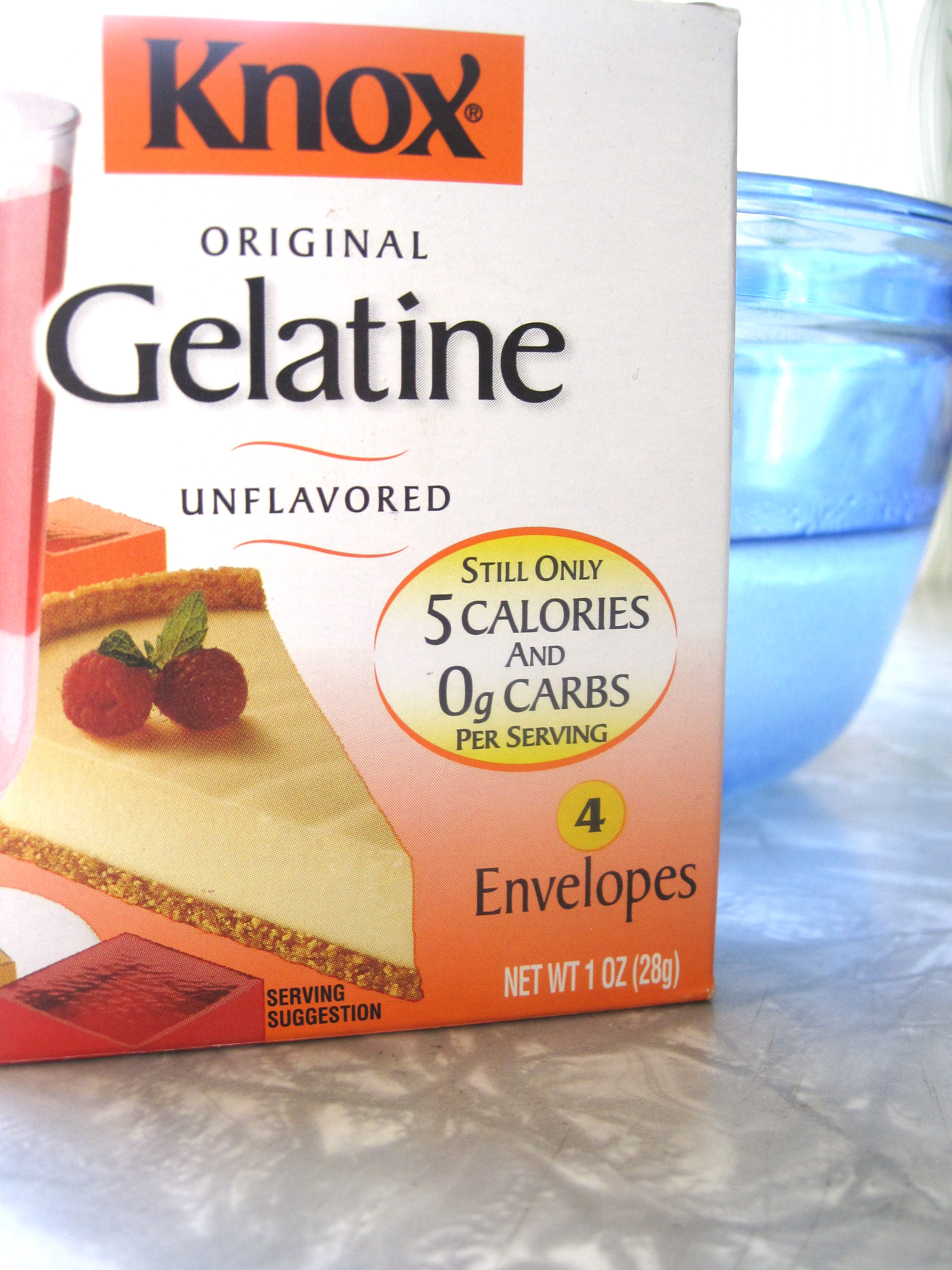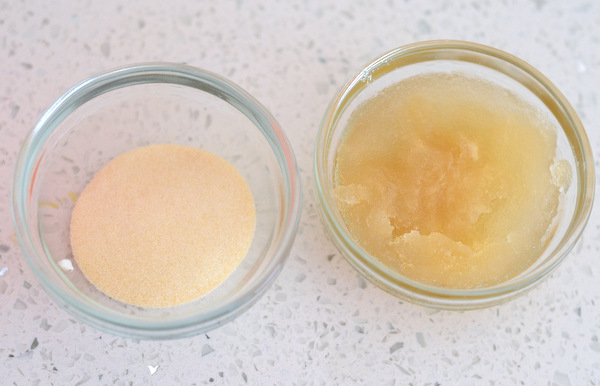
In the UK packages tend to come in 11g size. For example if you are using 10 grams of gelatin powder you would use 50.

Perfect for panna cotta.
Gelatin to water ratio. -Sprinkle the granules of gelatin over the surface cold water or liquid. Use 14 cup 60ml or whatever quantity is called for in the recipe per envelope. Do not dump the granules in as a pile as the granules in the middle wont dissolve of bloom properly.
-Let stand for 5 to 10 minutes. 14 oz 1 tablespoon 7g of powdered Gelatin will firmly set 16oz 2 cups 475ml of liquid. In the UK packages tend to come in 11g size.
They will set 600 ml 1 pint of a liquid. If you need your Gelatin more wiggly cut the amount of Gelatin in half or double the liquid but you need to stay along the lines of this ratio. Use 2 12 teaspoons or 14 ounce unflavored gelatin to 2 cups of water for standard firmness.
Decrease or increase water for your particular needs see chart above. One 3-ounce package of flavored sweetened gelatin needs 2 cups of water. One tablespoon of unflavored powdered gelatin equals 4 sheets of leaf gelatin.
Joined Oct 10 2005. 1 leaf gelatin to 100 grams base fruit puree etc and 100 gr whipped cream. For gelles 1 leaf to 200 grams base.
1 leaf bronze is equal to 1 leaf gold or 1 leaf silver that is they all have the same binding capacity. Gold is the purst form and the highest bloom strength so the leaves are. Ratio of gelatin to water for gummy candy.
I mixed 025 oz of gelatin with 2 cups of water. Im afraid I added to much water for my candy to come out like a. Add 12 cup 125mL boiling water.
Stir constantly until granules are completely dissolved. For recipes with ingredients that must be cooked or melted. You can vary the firmness of your gelatin dessert by reducing the ratio of powdered gelatin to liquid like this.
Use 1 teaspoon of unflavored powdered gelatin for 1 cup of liquid. Perfect for panna cotta. How To Make Panna Cotta.
Use 2 teaspoons unflavored gelatin for 1 cup of liquid. 95F-104F 35-40C 59F 15C 5-9ph. Platnium is the strongest and clearest sheet gelatin.
We are the only provider of platnium gelatin in the USA. The ratio is usually 1 to 5 times its weight. Ie 1 part gelatin to 5 parts water.
For example if you are using 10 grams of gelatin powder you would use 50. Many recipes call for 2-cups liquid per 1-packet of Knox gelatin. HOWEVER many people including my recipes prefer 1 ¾ cups liquid per 1-packet of gelatin.
This creates a stiffer jelly that nicely holds the design of your gelatin mold. Because of the heavy whipping cream gelatin-to-liquid ratios are different for panna cottas. For powdered gelatin add a few tablespoons of warm water and stir for a few minutes until the gelatin is dissolved.
Make sure to never boil any gelatin mixture as it will lose its thickening quality. If you are adding sugar to the recipe mix it with the powdered gelatin before dissolving it in liquid. Need some advice on liquid to gelatin powder ratio.
For a Thanksgiving themed dinner that we are attending my husband and I came up with an idea to do a cosmopolitin aspic. The idea is to have a mixture of vodka and seltzer solidified with gelatin then. Gelatine is a collagen used in cooking derived from either veal beef or pork.
Gelatine sets completely below 4C and melts at 35C giving it a velvety mouthfeel that is difficult to replicate although vegetarian substitutes such as agar agar are becoming more widely available. The water-binding power of gelatin is measured in something called bloom. The term sounds like it has something to do with blooming gelatin in water but it actually is named for a scientist named Oscar T.
Bloom who developed a test for measuring the strength of gels. Weaker gelatin might get a lower bloom rating around 50 while a bloom of. But here is a basic rule you can adapt.
Use 1 tablespoon agar flakesto thicken 1 cup of liquid and 1 teaspoon agar powder to thicken 1 cup of liquid. Here is the basic recipe to use if you cant boil your liquid directly. Dissolve 1 tbsp agar flakes or 1 tsp agar powder in 4 tbsp hot water.
Agar agar usually comes in 3 forms. Powder flakes or a bar. All 3 work equally well.
The real difference is ease of preparation. Powdered agar agar is usually the easiest to use as it can be substituted for gelatin in a 11 ratio 1 teaspoon or about 3 g of gelatin.